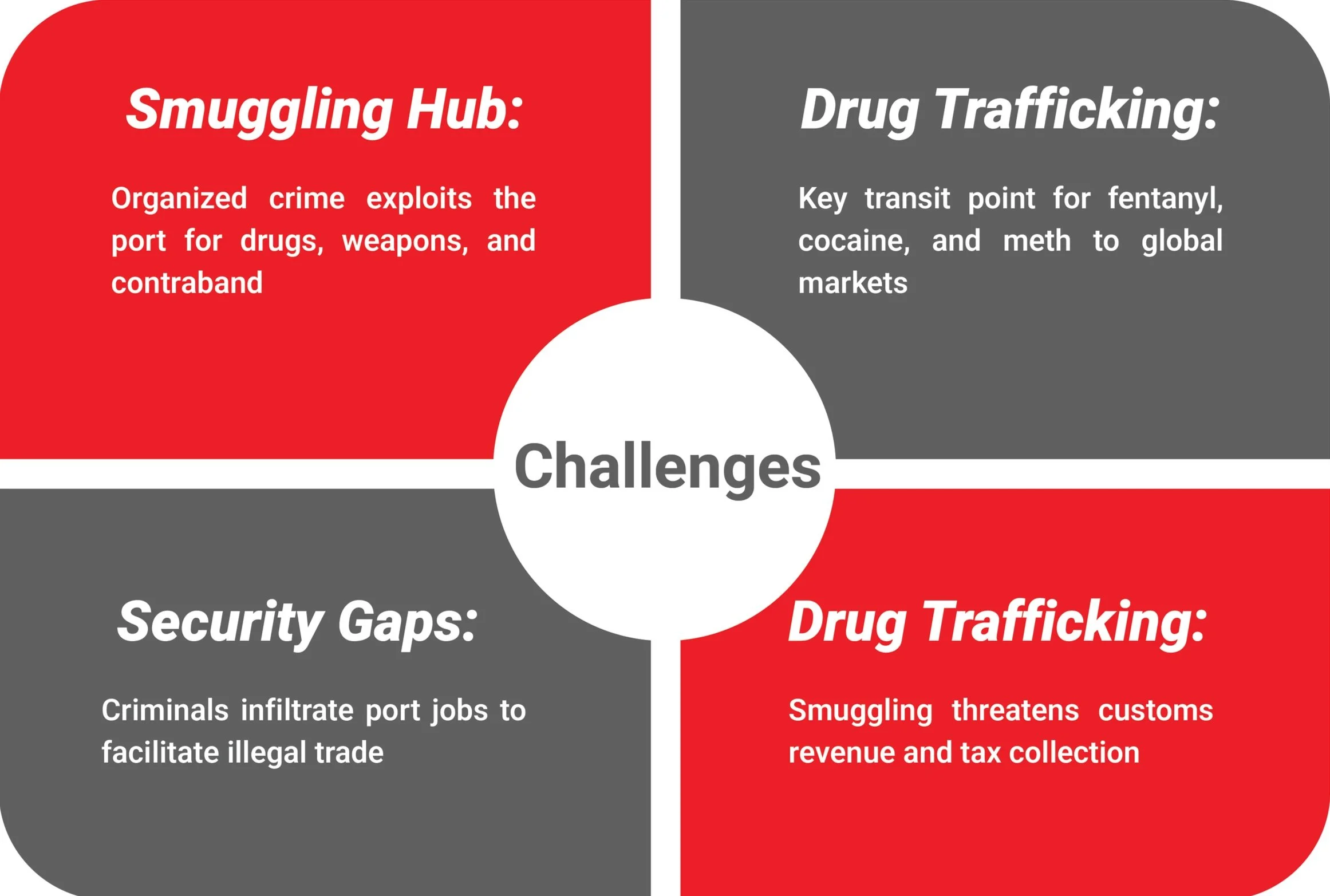Maximum Safety
The operation is fully automated, safe from radiation and physical interference as well. The Mobile or Fixed command and controller center is interactive and extremely simple, based on the principle of touching intuitive icons and displaying status and sequence programming. The scanning arm is automatically deployed in just a few minutes. It doesn’t need a driver to control the movement.
Intuitive Operations
The software control application is very intuitive, indicating at each step the correct course of action. The system also runs self-test sequences on start-up, displaying and testing all applications.
Mobility / Versatility
There are both standstill and mobile units, depending on the applications.
Imaging
The operator can see at glance the current high-resolution data of the entire vehicle or container. The imaging has the ability to detect common contraband, weapons, people and shipping irregularities The imaging can discriminate between organic, inorganic, metals and heavy metals. The material feature provides extra information for the operators to evaluate and identifying threats. The analyzing application can be customized with different filters.
Border Management
All commands and status of the sub-systems are registered in a “black-box” file. This provides administrators and supervisors to review content. The software control application has three level of security access.
Threats
What threats are we facing ?
Piracy
Modern-day piracy is a real and dangerous threat to vessels and ports, especially since most attacks take place while ships are still docked at port. Piracy has both economic and human costs.
Armed Robery
Armed robbery at sea is distinct from piracy. Rather than taking hold of the ship for a prolonged period of time, criminals seek to grab what they can with the use of violence, and then make a quick getaway. A poorly secured port, lack of resources and differences in jurisdictional authority enable criminals to move the stolen goods when they reach land.
Terrorism
Hijacking of vessels, either physically or by hacking the ship’s IT system, are some of the biggest threats that the shipping industry currently faces. The spread-out and busy nature of ports is a perfect environment for terrorist activity to go unnoticed. Large numbers of trucks frequently move in and out of ports, allowing terrorists to move people and weapons without suspicion. Terrorist organisations can also take advantage of ports to smuggle contraband across borders, sometimes with the help of organised crime (who also use ports to smuggle illegal goods).
Cargo Theft
One of the most common crimes that take place at ports is theft of cargo. Large, unattended containers are a prime target for organised crime groups and opportunistic criminals. Criminals will resort to all kinds of methods to gain access to cargo, including fake documentation, driving through closed gates to access transport yards, and online freight exchanges proposing low-cost transportation to be awarded shipments.
Drug smuggling and People Trafficking
Organised crime groups exploit ports’ security weaknesses to smuggle illegal drugs, contraband, and people. These groups can access cargo containers in a variety of ways: either by smuggling the goods or people into an unattended container, or by colluding with port authorities using bribery and/or extortion.
People smuggling can happen for numerous reasons: in recent years, the most common reasons organised crime groups traffic people are either for modern slavery, or because refugees are seeking passage to another country. The human cost in these cases is high, as the journeys these people embark on are long and unsafe.
Illegal Fishing And Environmental Damage
Ports can be used to bring in Illegal, Unreported or Unauthorised (IUU) catches of fish. IUU fishing is one of the biggest threats to the marine environment and thwarts countries’ attempts to fish sustainably. The UN estimates that up to 26 million tonnes of fish are caught through IUU fishing each year. One of the problems with this kind of fishing is that it exploits species that are already at risk of being overfished, such as cod. As these kinds of fish are often subject to restrictions, illegal fishers seek to sell their catch at a premium.
Criminal activity at ports can cause other kinds of environmental damage; for example, attacks on ships can cause deadly oil spills.
Security Measures
Developments in technology have enabled ports to drastically improve their security levels without severely slowing down their operations. State-of-the-art technology solutions are becoming increasingly affordable, so it is possible to equip ports with many more tools to monitor goings-on across an entire site. Some of the key technologies benefiting ports at the moment include 3D imaging, sensors and security cameras. For example, 3D imaging allows port authorities to inspect the inside of cargo containers without needing to manually open and inspect them. In the time it takes to inspect one container manually, it is possible to scan several. With the automation of certain aspects of site security, port security staff have a better oversight of the entire site. The need for an answer is universal and Tudor Tech scanning technology, is “the most powerful” accurate and valued investments in scanning and imaging technologies to inspect anything that can be transported by plane, ship, truck, or rail.


